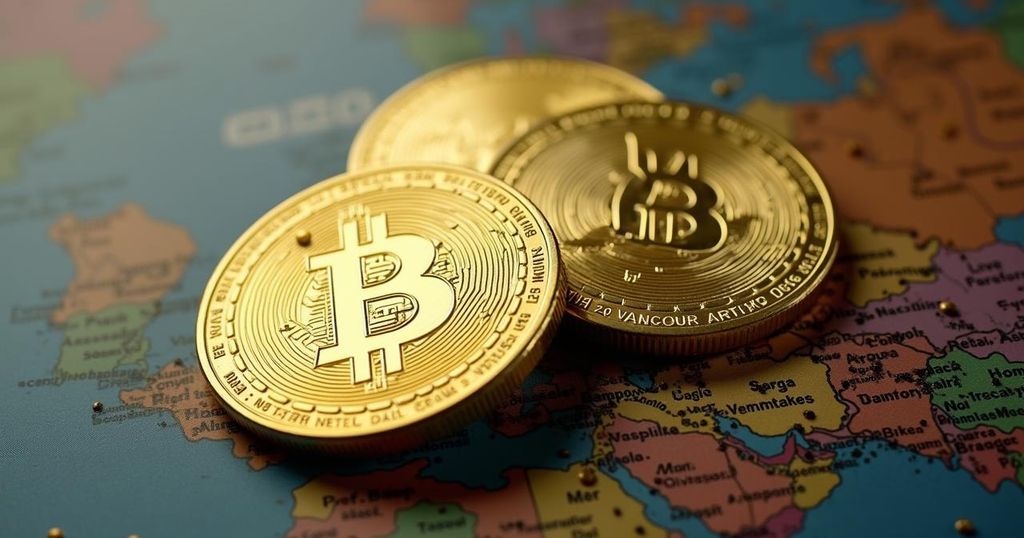Stablecoins are increasingly utilized in Argentina and Venezuela to combat economic instability and currency devaluation, with citizens opting for US dollar-pegged coins to protect their savings. Brazil shows significant institutional growth in cryptocurrency, driven by regulatory improvements and ETF introductions. Following the FTX fallout, the Caribbean is witnessing a rise in blockchain-related ventures, indicating a broader acceptance of cryptocurrencies in mainstream financial systems across Latin America.
Argentina and Venezuela are increasingly embracing stablecoins as their local currencies experience significant devaluation and economic turmoil. The growing popularity of stablecoins in these countries is prompted by the pressing need for financial stability amidst soaring inflation rates and faltering currency confidence. In Argentina, where inflation reached an alarming 143% by late 2023, citizens are turning to US dollar-pegged stablecoins to safeguard their savings from the rapidly depreciating peso. Similarly, Venezuelans, struggling with the plummeting value of the bolívar, are adopting stablecoins as a viable strategy to preserve their wealth. This trend signifies a marked shift towards cryptocurrency as a necessary hedge against deteriorating local currencies. Notably, Brazil is witnessing a resurgence in institutional engagement with cryptocurrencies, particularly stablecoins. After experiencing a downturn in early 2023, the Brazilian market is showing signs of recovery, with institutional transactions expanding by 48.4% by the first quarter of 2024. The enhancement of the regulatory framework and the introduction of cryptocurrency exchange-traded funds (ETFs) have attracted significant interest from major financial institutions, further establishing digital assets as credible alternative investment options. The increasing adoption of stablecoins is facilitated by a more structured regulatory environment, positioning them as a critical component in Latin America’s financial landscape—particularly for cross-border transactions and wealth preservation. Companies like Circle are expanding operations within Brazil to cater to the burgeoning demand for USD-pegged stablecoins, reflecting a broader trend across the region aiming to address economic instability through innovative financial solutions. Amid these developments, the Caribbean region is also experiencing growth in cryptocurrency engagement, especially following the FTX incident. David Templeman, a specialist at the Cayman Islands Bureau of Financial Investigation, notes a rise in international clients launching blockchain businesses. He underscores the ongoing evolution of the industry, advocating for enhanced regulatory measures to mitigate the risks associated with urbanized cryptocurrencies, asserting, “The fallout from the various collapses has placed pressure on the industry to learn from mistakes and put in place better oversight and guardrails.” As Latin American countries continue to confront economic challenges, stablecoins emerge as a key instrument for both individuals and institutions seeking financial resilience. Brazil’s institutional growth in cryptocurrency, bolstered by regulatory advancements, suggests a gradual integration of digital assets into the mainstream economy, establishing stablecoins as a viable pathway to economic stability amidst persistent inflationary pressures.
The article explores the increasing reliance on stablecoins in Latin America, particularly in countries grappling with economic instability, such as Argentina and Venezuela. As local currencies depreciate significantly, stablecoins—cryptocurrencies pegged to stable assets like the US dollar—are becoming instrumental for individuals and institutions aiming to protect their savings and investments. The article underscores the adoption of regulatory frameworks in Brazil that enhance institutional engagement with cryptocurrencies, demonstrating a shift in the mainstream perception of digital assets. Additionally, it touches on the growing activity in the Caribbean following industry crises, highlighting the region’s potential as a hub for blockchain development and cryptocurrency innovation.
In summary, the rise of stablecoins is reshaping the financial landscape of Latin America, particularly in Argentina and Venezuela, where economic instability has ignited a shift towards these digital assets as a protective measure against inflation and currency depreciation. Brazil’s regulatory advancements and institutional acceptance of cryptocurrencies are paving the way for a more secure financial environment, where stablecoins play a pivotal role. The Caribbean’s blockchain growth further illustrates the region’s transformation in response to the evolving cryptocurrency market.
Original Source: www.crypto-news-flash.com






